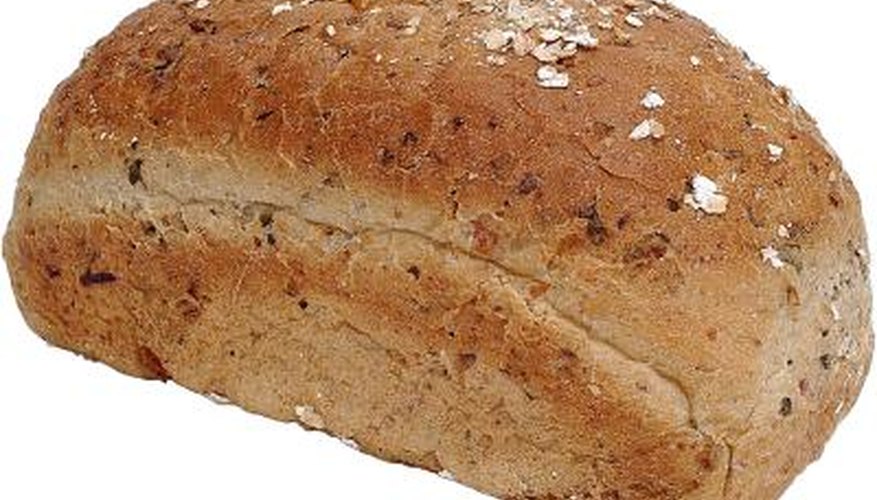Molds belong to the fungi kingdom; they are neither animals nor plants, according to the Florida Solar Energy Center. However, similar to animals and plants, moulds require certain conditions to grow, survive and reproduce. Bread moulds, or Rhizopus stolinifera, are no exception. In general, bread moulds need moisture, warmth, food and mould spores to live and thrive.
Food
Bread moulds need a food source to grow and survive. Mold is a fungus that requires other living organisms to get the energy to grow since it doesn't produce its own food the way plants do, for example. The ingredients present in bread serve as the food source for the growth of bread moulds. Essentially, anything that contains carbon atoms provides the nutrients necessary for moulds to grow and thrive, according to the Florida Solar Energy Center.
- Bread moulds need a food source to grow and survive.
- Essentially, anything that contains carbon atoms provides the nutrients necessary for moulds to grow and thrive, according to the Florida Solar Energy Center.
Water
As with all living organisms, bread mould requires water in order to grow and to stay alive. Bread mould uses water in many of its chemical processes at the cellular level. For example, moisture is a requirement for bread moulds to stay alive, as certain processes can only occur in a watery environment called the cytoplasm, according to agricultural researcher Hurley Shepherd of the United States Department of Agriculture. Shepherd explains that this watery nature helps in the proper mixing and movement of the components present in bread mould; thus, the presence of water helps growth of bread mould. In addition, bread moulds need moisture so that the mould doesn't dry out if it is exposed to light or heat.
- As with all living organisms, bread mould requires water in order to grow and to stay alive.
Temperature
Optimal mould growth occurs in warm temperatures, since enzymes, or the proteins that control chemical processes, work more efficiently when it is warm rather than when it is cold. The ideal temperature for moulds to grow and survive in is approximately 26.7 degrees Celsius, according to Shepherd.
According to Dr. Kristy Long, a food sciences and home economics specialist from the University of Alaska in Fairbanks, refrigerating breads will slow mould growth, and freezing breads will stop mould from growing all together.
Spores
To grow, bread moulds require the presence of mould spores. You can find mould spores everywhere in the air surrounding you. These mould spores float around until they end up on bread and begin feeding on its nutrients; this point marks the start of the growth or life cycle of the bread mould. If you do not take measures to stop the mould from growing, the mould will quickly spread as long as the conditions remain favourable and a food source is available.
- To grow, bread moulds require the presence of mould spores.
